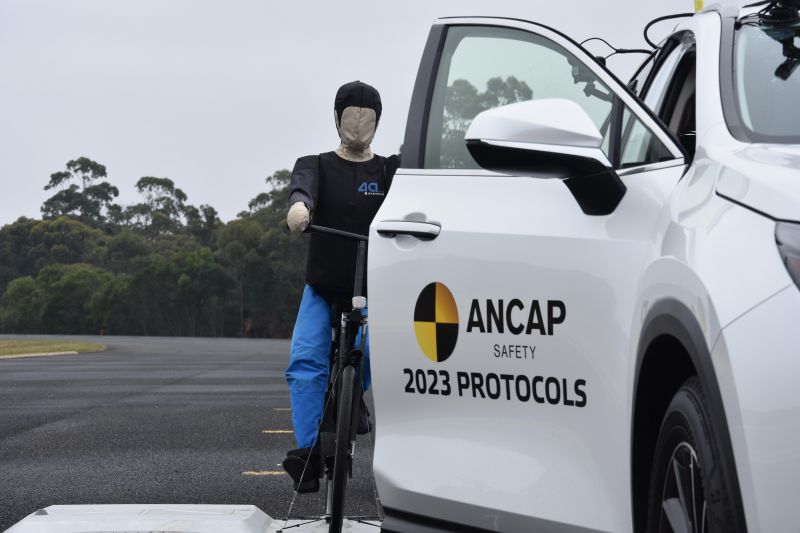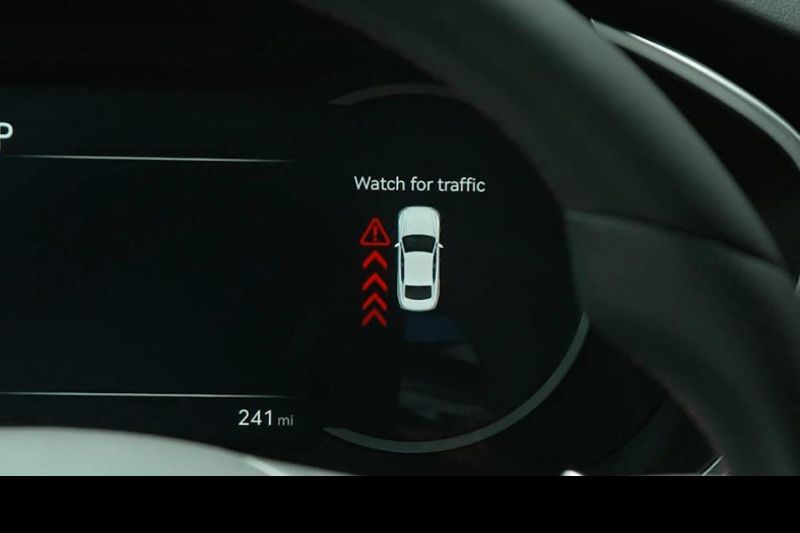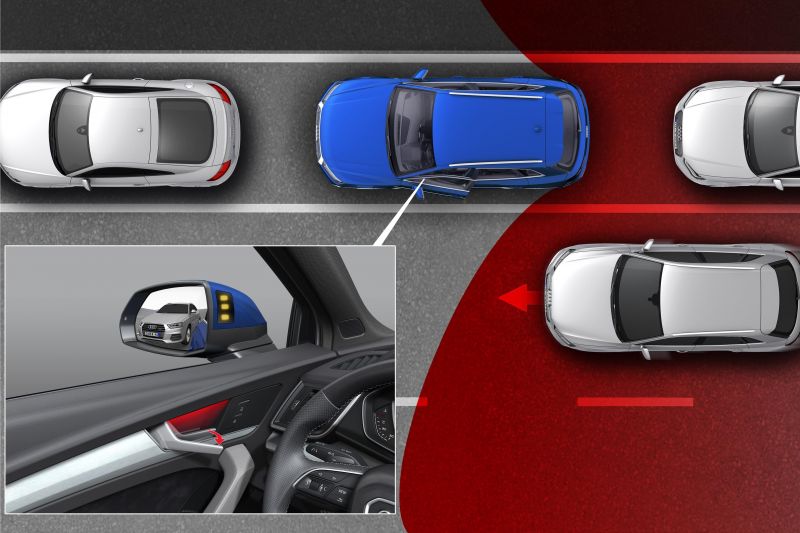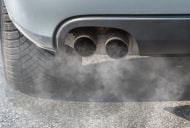ANCAP wants to address the scourge of “dooring” by awarding vehicles points for offering features that warn drivers of passing cyclists.
The term dooring refers to vehicles’ doors being flung open in front of a cyclist, leading to a collision.
Under the new 2023-25 testing protocols, ANCAP will assess the effectiveness of exit features.
These features either provide a warning in the form of a light in the mirror or door, or an audible or haptic alert. Some vehicles’ exit features may feature an active assist whereby an occupant is prevented from exiting if a cyclist or vehicle is approaching.
The latter typically use a lock delay or two-stage door handle.
The presence of an exit feature is worth 1.00 point out of a total of 9.00 points scored in the AEB/AEB Cyclist section of the Vulnerable Road User Protection category.
To score a full point, the feature must actively prevent the occupant from opening the door. It must also remain active for a minute after the driver has parked the vehicle, switched off the ignition and unbuckled their seatbelt.
0.25 points are awarded for a visual warning feature for the driver’s door, a further 0.50 points for an audible or haptic warning plus an active assist to prevent the door being opened, and a further 0.25 points for the presence of an exit warning feature on all other doors.
To assess the feature, ANCAP will have a cyclist dummy approach the parked vehicle from behind at 15km/h, with a 1m distance between them and the vehicle.
Tests are conducted on both sides of the vehicle, with a second obstruction vehicle parked 2m behind the test vehicle. These tests will be conducted at the same facilities ANCAP uses to assist active safety equipment.
For a vehicle to receive a five-star ANCAP rating in 2023, it needs a minimum score of 70 per cent in the Vulnerable Road User Protection category.
“Dooring is a serious risk for cyclists, particularly in cities and other built-up shared zones,” said ANCAP CEO Carla Hoorweg.
“One of the ways we can help prevent these incidents is to encourage in-car technology that reminds car drivers and their passengers to check for cyclists before they exit their vehicle, and where there is a real risk, temporarily prevent them from opening their door until the cyclist has passed.
“Dooring technology is currently only fitted to a small number of vehicle models, but we’re likely to see that increase quite significantly with this new requirement.”
ANCAP cites data from VicRoads, which shows there were 726 dooring crashes involving cyclists between July 2014 and June 2019.
207 of these resulted in serious injuries and one was fatal.
Audi was the first to offer an exit warning feature in Australia, with Genesis, Hyundai, Kia, Lexus, Mazda and Mercedes-Benz also introducing similar technology.
The three Korean brands call the passive feature Safe Exit Warning, with the active assist called Safe Exit Assist.
ANCAP’s new dooring test joins a long list of vulnerable road user crash test scenarios it assesses, including vehicles striking pedestrians, children and cyclists from different angles.
The safety authority also assesses reverse collisions between vehicles and pedestrians, as well as collisions where the vehicle is turning onto another street.
It’s not just cyclist safety that’s investigated by ANCAP, with the safety authority also assessing the impact on motorcyclists.
The test scenarios here include a vehicle ramming a motorcycle from behind, hitting it head on, veering into its lane, or turning across its path.
No ratings have been awarded by ANCAP yet under the new 2023-25 test protocols.
MORE: Here’s how ANCAP is making crash tests harder from 2023
MORE: Australia’s best-selling cars with no safety rating in 2023













